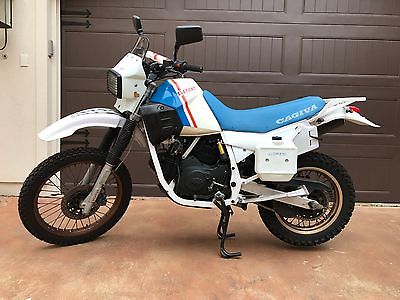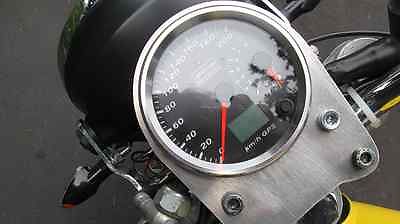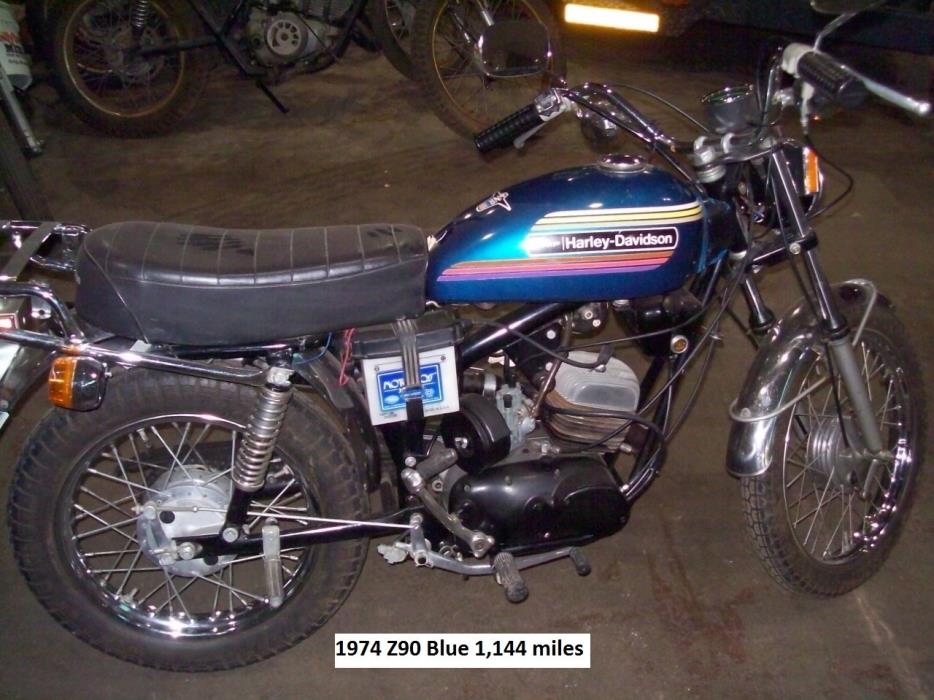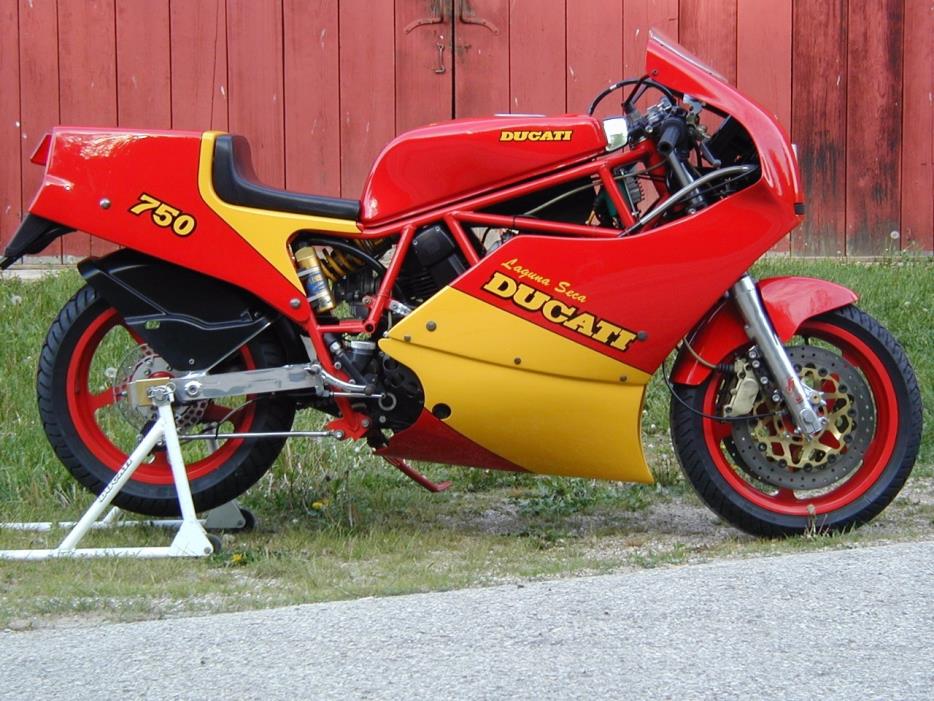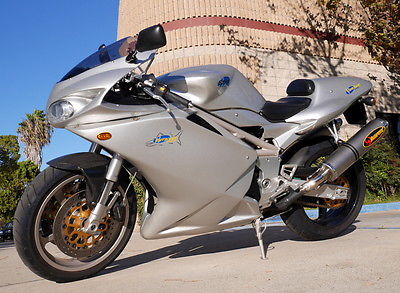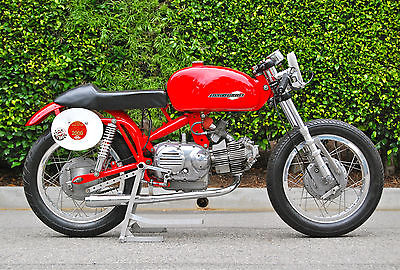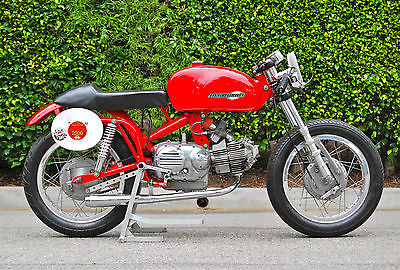$22,500
Ventura, California
Category
Sport Bikes
Engine
1000
Posted Over 1 Month
<div style="text-align:center"><img src="http://ti2.auctiva.com/sw/java.gif" border="0"><br><table align="center"><tr><td><a style="text-decoration:none" href="http://emporium.auctiva.com/motorama" target="_blank"><img src="http://ti2.auctiva.com/sw/browse1.gif" border="0"></a></td><td height="23px" valign="middle" align="center"><font face="arial" size="2"><b><a href="http://emporium.auctiva.com/motorama" target="_blank">motorama</a> Store</b></font></td></tr></table></div> Increase traffic to your listing with Auctiva's FREE Scrolling Gallery. 2001 Nico Bakker Barracuda More than likely the only example titled in California (and possibly the entire country). This was originally built for Nicolas Cage, and was the actor's favorite bike of his collection. Unfortunately, his insurance severely restricted his off-screen riding, and this bike only has a total of 1232 klms (765 miles) on the odometer. It is practically a new bike! This beautiful machine is part of a wonderful collection of Superbikes. These bikes are owned by a friend who is 70 years young, and he has reluctantly decided to sell off some of them. He's not computer savvy, so he asked if I would list the bikes for him as a favor, and we decided to list them individually rather than listing all the bikes at one time. This bike was featured on RareSportBikesForSale / featured listing Nico Bakker (Google this to find the website). I don't think I'm allowed to post a link here. Here is an excerpt from the feature with special thanks to the Rare Sports Bikes team: When it comes to collectible machinery, it helps to have a rare and desirable model, or something from an exclusive manufacturer, or something with super low miles, or something that was once owned by someone famous. Or in this case, all of the above. This super rare, Nico Bakker Barracuda (with vaunted Suzuki TL1000 power) was built exclusively for Nicholas Cage. Yes, the one with Ghost Rider film creds to his name. Talk about one in a million, here is a bike that can tick all the right boxes on every level. Star power never hurts, although it is seldom the single driver behind a collectible. Rather, this Barracuda, designed and constructed by the true Dutch Master known as Nico Bakker, could be the only one of its kind imported into the United States. You want rare, I challenge you to find a more meaningful or significant opportunity than this. This bike was recently serviced and a new battery installed. It starts immediately and runs strong, with a wonderful exhaust note. This bike is close to mint condition and the cosmetics look extremely nice. I could not find any issues to note other than a few tiny blemishes that are too small to photograph. It is evident that this bike has led a very pampered life. Buyer will be extremely happy with this bike - no unwelcome surprises! The VIN number is actually "BAKKER 007" How cool is that? A fantastic piece of exotica for the rider, collector, or museum. Seller still has the California title in Nicolas Cage's name. I will be listing other classic and exotic machines as time allows. Good luck, and let's complete this transaction like gentlemen- Terms: The bike has been brought to my shop in Ventura, CA so it can be shown more easily, and I am happy to do this during the auction period. Ask all questions before you place a bid and I will do my best to get the answer for you. Serious buyers only please. Sold As-Is like any used vehicle with no warranty. I have described it to the best of my ability, and am not responsible for errors or omissions. If you win the auction, be prepared to pay a $500 nonrefundable immediate deposit and payment in full within 7 days. Bike can be safely stored for 2 weeks free of charge while waiting for transport. I can assist with getting transportation arranged, but I do not have quotes available. Buyer is responsible for all transport costs. Overseas buyers are welcome to bid. Article courtesy of Carole Nash / Insidebikes If you’ve never heard of Dutchman Nico Bakker, then take a glimpse at some of this man’s handiwork...Over the last two decades the Bakker specials have taken several manufacturers motorcycles into another dimension, in terms of speed, handling and styling. Delve into this section to learn more about the pure engineering genius of Mr Bakker and consider some of the more radical sportbike options. Six wins from six races in the 1999 Dutch BoT championship suggested Nico Bakker’s latest creation was, well, a winner. Jumping on and hitting the button, Roland Brown soon found out why, the Barracuda’s hooligan heart - a Suzy TL1000 V-twin - complemented by sleek, sexy styling and great handling. Oh yes, he found it quite fast too! Nico Bakker has been improving on Japanese bikes for years often by pushing the limits of chassis engineering. New ideas, lightweight materials, advanced technology... the Dutchman has used them all, from single-shock rear ends in the late Seventies, via aluminium frames before they became common, to various ingenious front suspension systems. Bakker’s latest bike, the TL1000-engined Barracuda V-twin, is one of his best yet. The Barracuda, named after the fast, fierce grey fish, is lean, light, great fun to ride, and has a great racing pedigree. But this is a Bakker bike with a difference. This time, words like innovative and advanced don’t really fit. Instead, Bakker has gone back to basics. The Barracuda, powered by the 996cc V-twin engine from Suzuki’s TL1000S, abandons the Japanese bike’s oval-section aluminium frame tubes in favour of good old round steel, and replaces the TL’s controversial separate rear spring and damper unit with a conventional vertical monoshock. Like many of Bakker’s bikes, the first Barracuda was built for the track. Six wins from six races so far in this season’s (1999) Dutch BoT championship for Bakker’s engineer/rider Jeroen Oudenman who had good but less spectacular results in the same series last year on a more standard TL makes a pretty good argument that simple is sometimes best. And now Bakker has begun producing a small series of near-identical roadgoing Barracudas. This bike might not be the most radical to come out of Bakker’s workshop amid the flat green fields of northern Holland, but it is definitely one of the sexiest. With its slanted twin headlights (sourced from Cagiva’s parts bin), sculpted full fairing, single seat and all-grey paintwork, the Barracuda looks lean, light and racy, with a hint of Honda VFR and a whole lot more aggression. Bakker’s engineering skill is clear from one glance at the frame, which bolts a ladder of steel tubes to a billet aluminium swing-arm pivot at each side. The steel tubes are hand-welded from 38mm diameter, aircraft-quality chrome-molybdenum. Bakker says his frame weighs no more than Suzuki’s TL-S trellis but is as rigid as the TL-R’s twin-spar aluminium frame, which is 7.5kg heavier. In contrast to the standard TL’s separate rear shock and damper unit, the Barracuda has a conventional rising-rate monoshock, not unlike the ones that Bakker pioneered on Yamaha TZ250 road-racers almost 30 years ago. ’Our system is lighter, and easier to set up in conjunction with the suspension companies,’ he says. ’When something is good, why change it? Suzuki has two systems instead of one. It’s not necessary to be so complicated.’ Bakker added 10mm to the length of his bike’s aluminium swing-arm, bringing the wheelbase to 1425mm, to help keep the front wheel on the ground. He added a little trail by reducing fork offset by 1mm (the lighter racebike has even more trail, to increase stability further), and retained the Suzuki’s 23.7-degree fork angle. ’Weight distribution is 51 per cent on the front, a little bit more than normal, because of the swing-arm, and we can also adjust the swing-arm pivot to keep the front wheel down.’ The roadgoing Barracuda will come with either an Ohlins or WP shock unit (to customer choice). This prototype compromised by having a WP body with an Ohlins spring, as part of Bakker’s development process. Front forks are the standard TL’s 43mm upside-down units revalved with WP internals, although customers can pay more for a complete WP or Ohlins front end if they prefer. Wheels are five-spoke Marvics, slightly lighter than standard. The front brake system combines the standard four-pot calipers with Brembo discs. Even the all-conquering racing Barracuda incorporates very little engine tuning: just slightly more compression and new cams, plus carburettors instead of fuel-injection, as demanded by Dutch BoT rules. So it’s no surprise that the roadgoing version is powered by a completely standard TL-S powerplant, with fuel-injection retained. The only modification is an Akrapovic exhaust, which increases power by a few horses to 126bhp at the rear wheel. This prototype wore just a pair of the Slovenian firm’s end-cans, as the full Akrapovic system with which production machines will be fitted hadn’t arrived in time for my test. The Barracuda still sounded the business, though, when I threw a leg over the fairly low single seat and hit the button. This bike was designed for lanky Dutchmen, and unlike the standard TL-S its screen wasn’t cut so low that it obscured the retained Suzuki instruments when I leant forward to the fairly low clip-ons. One thing was very familiar, though, as I pulled away: despite Bakker’s efforts to tame it with his chassis layout, the torquey Suzuki V-twin motor was still just as much of a hooligan as ever. Okay, so the Barracuda is slightly longer and fractionally more front-heavy than the standard TL-S. But the Dutch-built special is also 10kg lighter at 177kg dry. Simply winding on the throttle in first gear was enough to send the front Marvic inadvertently lifting off the ground as the eight-valve V-twin’s midrange torque came thundering in. Doubtless the Bakker bike’s reduced weight and few extra horses gave it a tiny edge over the standard TL Thou in a straight line, but I couldn’t really tell. The Akrapovic cans certainly hadn’t marred the Suzuki V-twin’s delicious midrange response, and this bike ran very cleanly and reliably at low revs, which isn’t true of all TLs. And when I found a straight bit of road, crouched behind the tinted screen and wound open the throttle, the Barracuda was every bit as rapid as you’d expect. It stormed to over 150mph with plenty of speed to come, that delicious 8000rpm-plus rush of power very much in place. High-speed stability was excellent, best illustrated by the rapid way the bike recovered after a couple of not-too-scary handlebar flaps when I went over a slightly raised strip of road spanning a small canal, at over a ton. But my first impressions of the chassis had earlier been surprisingly mixed. At slow speed, even with the WP steering damper on its lowest setting, the Barracuda swayed very gently from side to side, to much less a degree but in similar fashion to the way the TL1000S does when wearing its over-stiff factory-fitted damper. Once out of town and up to speed, though, that feeling was immediately forgotten and the Barracuda showed why it has been so successful on the track. The front wheel might have been keen to get some airtime in the lowest gears, but at higher speeds, when powering out of corners with that mighty midrange kicking in, the Dutch bike felt superbly well planted when the standard machine would just possibly have been giving the odd twitch. Holland is so flat that most roads are too straight to be much fun, but ex-racer Bakker knows where a few good bends are to be found. Cranking the Barracuda hard into one particular long, smooth second-gear right-hander showed the bike at its best, as it could be flicked effortlessly and fast into the turn, felt superbly planted and stable as I carved through, and then catapulted out onto the next straight without any bar-wiggling drama. Chassis details were sorted with the efficiency that’s to be expected of Bakker, whose customers over the years have ranged from Dutch GP heroes Wil Hartog and Boet van Dulmen to firms including BMW and Laverda. There was masses of ground clearance, even given the huge grip of the Michelin Pilot rubber, the rear of which was a 180/55-section tyre instead of the standard TL’s 190. In fast bends and slow, the whole bike gave such a feeling of control that I could easily understand why the racing version, 20kg lighter and wearing slicks, has been so dominant on the track. Occasionally the Barracuda’s racing background worked against it, as its suspension was a bit firm for bumpier bits of road. There’s plenty of potential for reducing preload and compression damping if necessary, but most roads were smooth enough that it didn’t matter. My only slight cornering concern was that, when hanging off the bike, my oversize feet felt as though they might slip off the custom-made, adjustable pegs, though in reality it wasn’t a problem. The extra stopping power provided by the change of discs was very welcome, too. The standard TL-S’s front brake is nothing special, and Bakker considered substituting its four-pot Tokico calipers with the TL-R’s superior six-potters. Instead he replaced the rotors with Brembo rotors in the same 320mm diameter, which gave a big increase in the stopper’s bite with no loss of feel at the lever. Testing exotic bikes like this comes with the big drawback that you have to give them back at the end of the day, and this was particularly tough with the Barracuda. As a satisfied TL1000S owner I reckon the much-maligned standard Suzuki is a blinding bike, with distinctive looks, torquey and characterful engine, light weight and quirky but generally effective chassis. The Barracuda, by comparison, is sleeker and much more distinctive, fractionally more torquey and just as full of character. It’s also lighter, and handles and stops better. The hand-built Bakker bike is also inevitably a lot more expensive than the mass-produced Suzuki. But if you like the TL Thou, you’ll love the Bakker Barracuda. Vital Statistics Engine Liquid-cooled 90-degree V-twin cc 11.3:1 Claimed power (bhp) 126 bhp Compression ratio 996 Transmission Six speed Cycle parts Front tyre 120/60 x 17in Michelin Pilot Rear tyre 180/55 x 17in Michelin Pilot Front wheel 3.50 x 17in; Marvic magnesium Rear wheel 6.00 x 17in; Marvic magnesium Front suspension 43mm inverted telescopic, adjustments for preload, compression and rebound Rear suspension One WP/Ohlins damper, adjustments for preload, compression and rebound Front brake 2 x four-piston Tokico calipers, 320mm Brembo discs Rear brake Twin-piston caliper, 220mm disc Performance Top speed over 150 mph Fuel capacity 19 litres <div style="text-align:center"><a style="text-decoration:none" href="http://mostpopular.sellathon.com/?id=AC431257"><img src="http://www.sellathon.com/Resources/Images/countercredit.gif" border="0"></a></div>
Trim Barracuda
